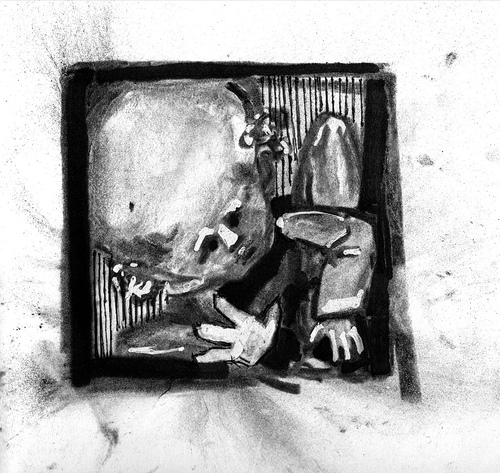Once upon a time in a windy city, I had a best friend named Doug who made the most amazing lentil curry, sometimes snorted when he laughed and liked to sing Leonard Cohen songs in a sultry voice. He was part catty Bloomingdales merchandiser, part moody artist, part one-man musical.
He also called me every Monday to make sure I was up for work because he was a morning person and knew I was not. Instead of an alarm, I’d wake up to his own brand of citified, North Carolina drawl, “Hellllaaauu.”
One Sunday I got a different call, the kind where you know something is wrong. A phrase knocked around in my head, “things are… prêt-ty bad.”
In reverb, pretty bad, pretty bad, pretty bad, the t’s were sharp little daggers, softened with a sigh at the end. He’d said it slowly the last time we’d spoken on the phone and I had failed to grasp the full depth of it. He’d been suffering from depression for a long time before taking his life.
In the aftermath, the memorial planning and apartment sorting, another friend said, “I can see the grief written all over your face”. She had no idea what saying this did for me. It liberated me. My grief was already out there, a gaping wound and I wasn’t fooling anyone by trying to hide it.
His mother, who I would meet for the first time at the memorial, had asked his friends to sort out his Rogers Park apartment and set aside some personal effects, books and some of his artwork for her. I was tasked with choosing the books.
I often called Doug my literary soul mate. Our early friendship flourished over discussions of book jackets and sharing sentences we wished we had written with each other. Was Joan Didion’s The Year of Magical Thinking a poignant choice or would it hit too close to home? I found myself doubting each selection. These, I knew, were the books she would read when she travels the world to scatter Doug’s ashes.
Meeting someone for the first time when your only bond is that you loved the same person when they were alive is strangely intimate. My heart was so broken for her and for me and for all of the world that would be missing out on Doug. No barriers of decorum withstand that.
After crying our eyeballs out his Mother and I shared stories, like the one from the night Doug and I walked down Winona Street in Chicago’s Uptown neighborhood and stumbled onto a naked man sitting on the hood of a car, just hanging out, staring at us. We linked arms, picked up the pace, unsure whether to laugh or be frightened. Maybe I told her this story because it afforded us a much needed laugh, but she already knew it. Doug had told her told her the story years ago on the phone.
The thing I most wanted to tell her was this. Once, Doug told me he cried when he saw Mark Rothko, Untitled [Blue, Green, and Brown], 1952. In his own work, he had a gift to create the richest colors. When I looked at his oil paintings, it was as if he had invented color. If you asked him what his favorite color was, he wouldn’t simply say green. He’d say the green of the new growth at spring. Considering all of this, the best way I can think to describe Doug is to say that he was colorful man.
I hoped to maintain some sort of grace, dignity, poetry when I accompanied his mother and a few close relatives and friends to scatter some of his ashes in a Chicago park. I wanted to say words fit for a loyal friend, a talented artist, the man of honor in my wedding. Instead I was a blubbering choking idiot, a cruel Chicago sleet smacking me in the face. Grief is messy.
Ahead of me is one last trek back to Chicago to pick up a painting, one of the few handfuls of the art he left behind. The week before he died he scraped and painted over some of his work. He would paint something 100 times more lovely than much of the work I’ve seen hanging in galleries and he would paint over it, or just leave it unfinished. I never understood his self-doubt, the way I never understood how deep and troubling his dark hours must have been.
I’m grateful for this last pilgrimage, to still have this official Doug business ahead of me keeping things from feeling so final. Afterwards, it’s just me, a little lost in this world without him.
Somehow the heaviness of this has let my heart grow deeper to accommodate it all. I can’t not carry this love and loss with me, and I can’t not let there be room for the others, the old and new in my life. This Doug-shaped hole allows me to look at friends and say “What in the world would I not do for you?”
—
Note:
I wanted to put this story out there in hopes it might help someone else recognize a plea from a loved one before it is too late. I owe an enormous debt of gratitude to Amber Naslund, for paving the way for me to write this by sharing this post, and also to April, the friend that liberated me from suppressing my grief.
This post was originally published on June 12, 2010 on Sundayed.



